GyeongGi Cultural Foundation
Introduction to 2018 Gyeonggi Creation-Center Artist in Residence : Jihyun Jung
Gyeonggi Creation-Center
2018 residents of Gyeonggi Creation-Center can be found at the Gyeonggi Creation Center website (http://gcc.ggcf.kr/). |
2018 Gyeonggi Creation-Center Artist in Residence : Jihyun Jung
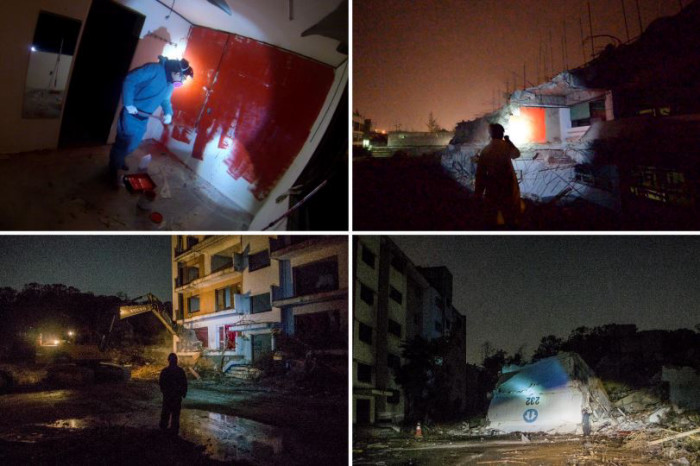
< Demolition Site >, < Reconstruction Site > Work process|Jihyun Jung|2013~2015|Video recording
[ Artist Note ]
I was born in an apartment complex created around 1988 Olympic Stadium. Since the Korean War ended, war-torn Seoul has gone through modernization and rapid economic development after 1988 Seoul Olympics. The low-rise apartment houses built in those days of Olympics have been replaced by high-rise apartment buildings. The town where I was born and spent my childhood also has vanished by urban development. This experience became motivation for my works. Cities are rapidly built and easily disappear as a functional place of seeking economic profit based on development plan, while losing their own essence as a place of living.
I walk into the construction site of new town or the demolition site of vanishing old town, and intervene in the conditions of the site which change throughout the entire process. I make the structure from the construction materials found on site or mark the walls with red paint, then photograph, as a record, the process of being broken down to pieces of concrete.
[ Description of work ]
“ Topos koinos ,” or the shared common space, is in danger of extinction. Cities are only used as indicators of economy or politics, and no longer function as a place of living, which used to be their essence. People have hide their place of living inside thin steel fences, and have changed it into the functional urban space which guarantees benefits based on extravagant development plan. I walked into the space which is hidden by the steel fences and cannot be seen by the people who live in it, such as redevelopment area or reconstruction sites of new town. There, I look for the scenes of urbanization, and recorded the scenes as form of photos, directly intervening the scenes. < Construction Site >, < Demolition Site >, and < Reconstruction Site > are the works about those sites inside the steel fences.
< Demolition Site >
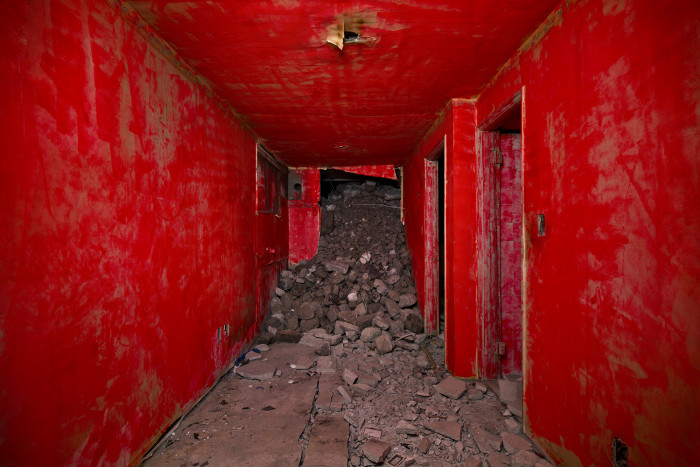
Demolition Site 01 Inside|Jihyun Jung|2013|Pigment print|120x160cm
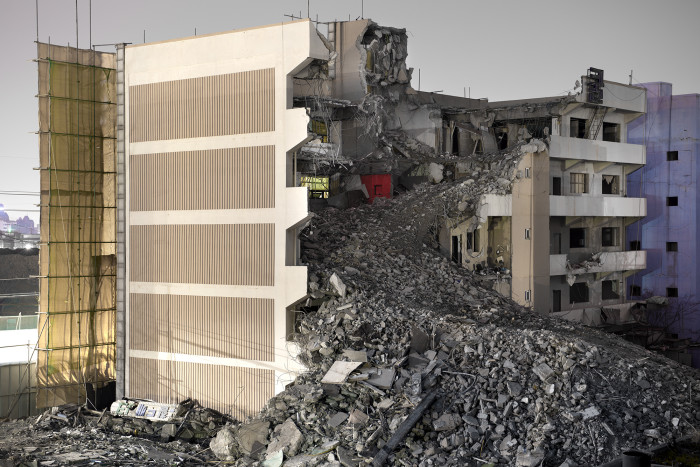
Demolition Site 01 Outside|Jihyun Jung|2013|Pigment print|120x160cm
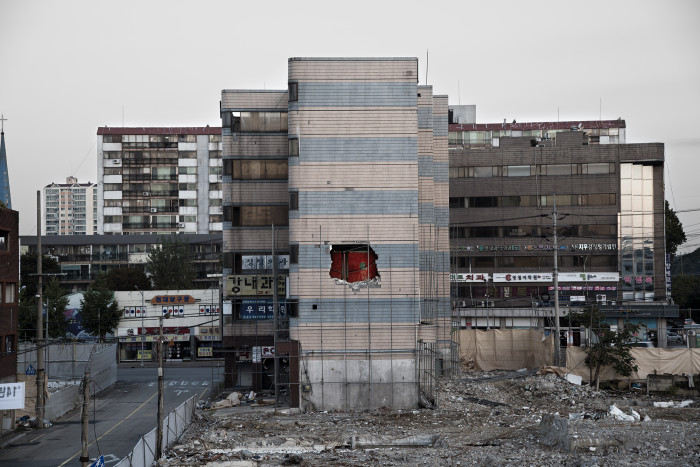
Demolition Site 11 Outside|Jihyun Jung|2013|Pigment print|120x160cm
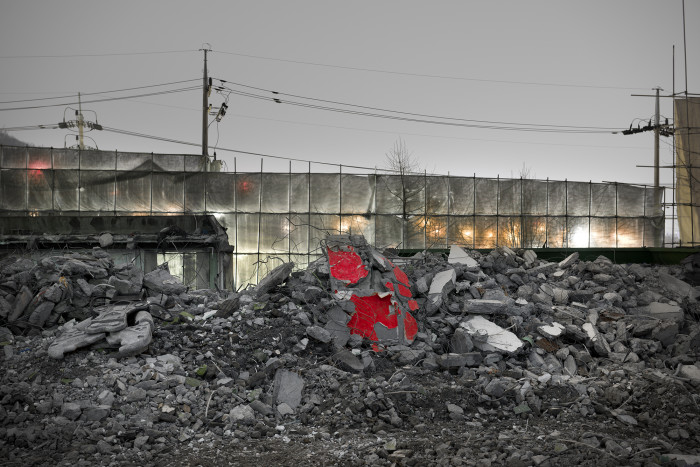
Demolition Site 05 Outside|Jihyun Jung|2013|Pigment print|120x160cm
I sneaked into a building that was scheduled to be torn down, and painted the inner walls red before I photographed them. After the demolition I went in again, looking for traces of that red paint. By documenting the red walls that were broken down into smaller and smaller pieces as the building was destroyed, I chased after the fate of this red room that would, in the end, disappear into the void as an anonymous piece of concrete. The red room was a private space that dissolved when faced with a system of redevelopment. I reveal what kind of space the city we are living in is, and how the city as a place of community is vanishing. It is how I raise questions about the rash thoughtlessness of urbanization. Finding the red room where traces of an individual’s life still reside from within the spectacle of demolition is a work to recover and recognize the city as a place for living.
< Reconstruction Site >
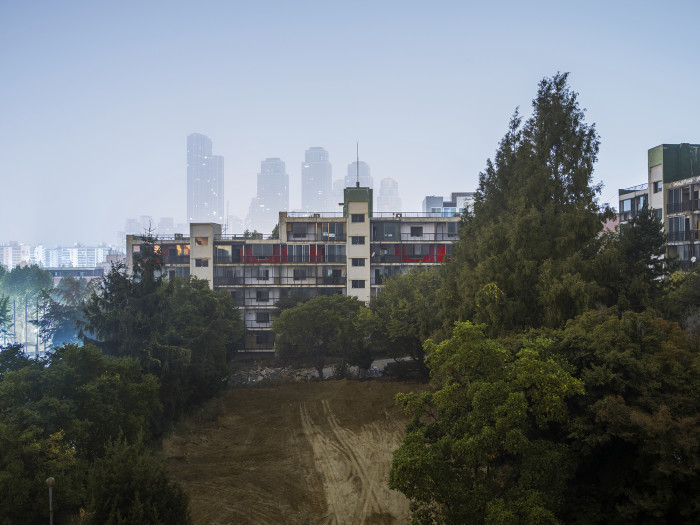
Reconstruction Site 1|Jihyun Jung|2015|pigment print|140x180cm
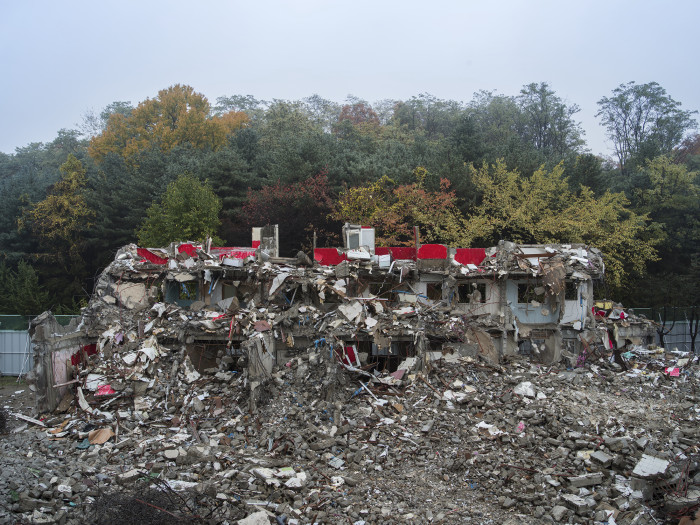
Reconstruction Site 2|Jihyun Jung|2015|pigment print|140x180cm
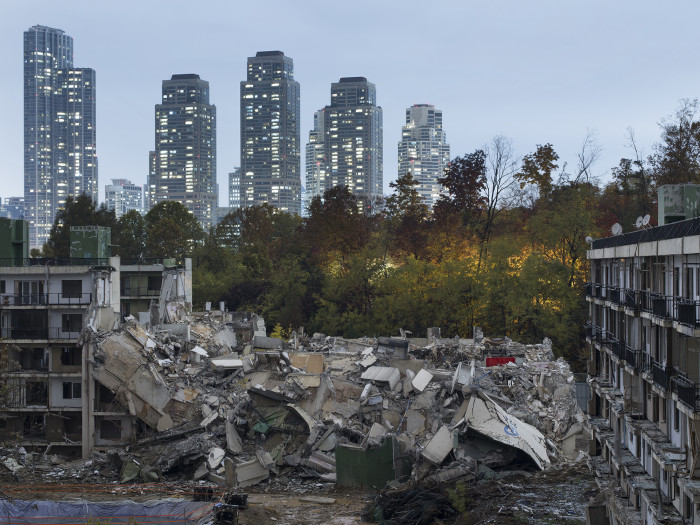
Reconstruction Site 3|Jihyun Jung|2015|pigment print|140x180cm
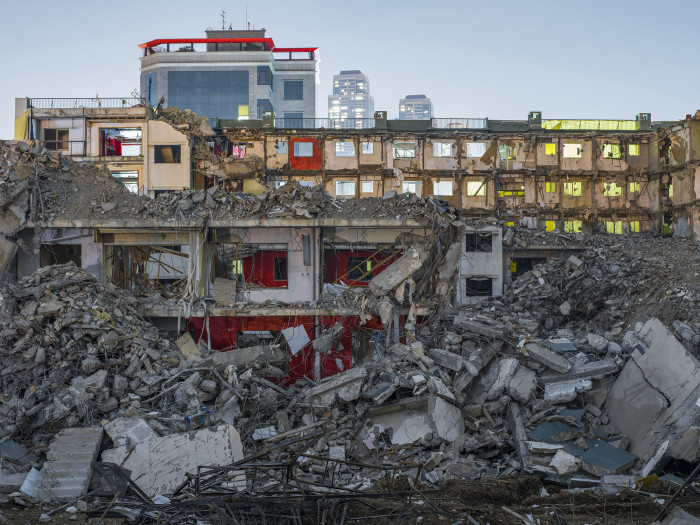
Reconstruction Site 10|Jihyun Jung|2015|pigment print|140x180cm
In his work Reconstruction Site, he painted the entire interior of a floor in red and recorded the red walls coming into view due to demolition work and the change of its surroundings. While common residential space like an apartment usually offers severalty to each household, it becomes common and one property with the concurrence of reconstruction association having its reconstruction ahead. A sight where the red walls which once separated individual houses merge to form a red band is a visual metaphor of how those residents that once lived independently become one for the purpose of economic profit realization.
< Construction Site >
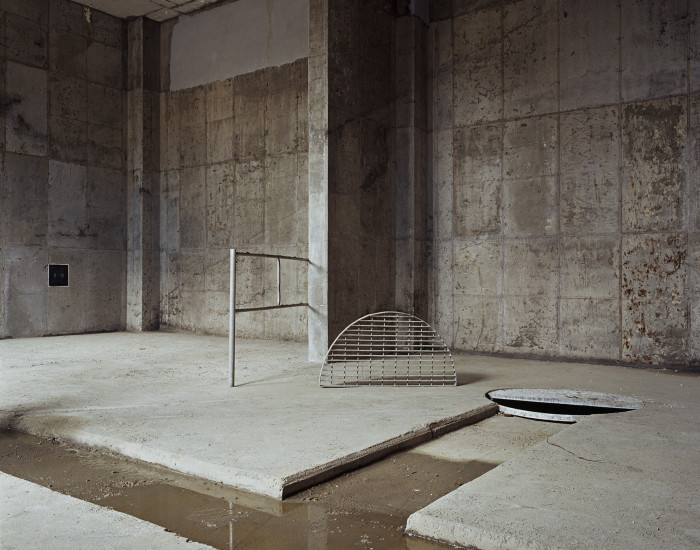
Construction Site 01|Jihyun Jung|2012|Pigment print|125x155cm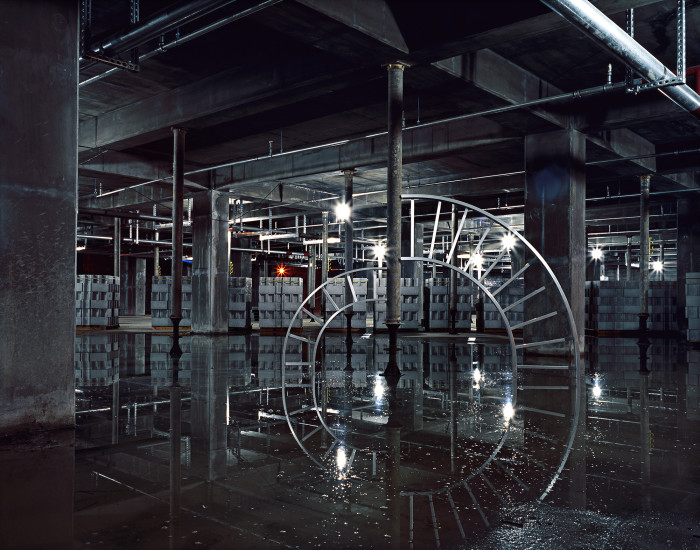
Construction Site 20|Jihyun Jung|2012|Pigment print|125x155cm
A construction site is where the act of destroying nature collides with the act of creating a place to live. It does not exist until the apartments are completed and a functional space appears amidst high-speed urbanization. From the interiors of the structures, I was able to find a point that conflicts with the dichotomy of construction sites. Then, by interfering with the order of the functional matters and discovering their tranquil side, I tried to express this seemingly rational, objective construction site as a personal and emotional space. These images were taken while exploring the construction sites of large apartment complexes that are now complete and fully functioning as homes in Pangyo New City in Bundang, Cheongra New City in Incheon, and Shinnae Development sites in Seoul.
[Critique] The Nonexistent Community (SaBine Lee, National Museum of Modern and Contemporary Art, Korea)
Born in 1983, JiHyun Jung is one of the young artists attesting the arrival of a new generation in the world of art that handles the subject of building renovations. Artists of this generation who are often labeled as ‘apartment kids’ grew up perceiving the communal residence or apartments, as well as the way a city operates, as a natural part of their surroundings. They come from a very different place compared to those born in the 1960~70s, a group from the ‘alley era’ when people with different economic conditions and lifestyles have coexisted. Therefore their artwork differs from those of preceding period that contained accusing messages or reminisced the uniqueness, their basis being the critical views on the process of modernization and urbanization. For this new generation, their childhood stage was set in the apartment complexes and not in the alley ways. The most distinctive characteristic of this new unit of residence is safety―ensured because it is occupied by economically similar class of people. Therefore the moment this safety is threatened or sabotaged, it’s as if the ground is shaking underneath their feet, the ground they had not even noticed until that very moment. Based on the experience, they form a certain artistic view of the world.
JiHyun Jung had spent her childhood in Jamsil Jugong Apartments, and when this body of buildings went into reconstruction in the early 2000s the event became essential to his world of art. Since the latter half of the 2000s when construction of second phase new towns like Pangyo and Gimpo was launched, Jung really began to photograph those apartment construction sites in the new cities. In Construction Site (2008-2012) series, his images focused on the apartment interiors soon to transform into a residential space instead of looking at the outer construction area. This vague space full of concrete walls and abstract construction structures, but its purpose still unknown, are embraced in warm and soft natural light. The artist had chosen day time in the weekends when the construction halts and the silent desolation of the time spent to explore the insides of the buildings is entirely exposed on the screen. Construction materials with unknown purpose are placed in rather unnatural positions, indicating the artist had briefly interrupted the order of this space. The insight on instability obtained by witnessing the collapse of the world is advanced into the process of inquiry and comprehension of the structure that form the foundation of that world.
Meanwhile, in Demolition Site (2013), a project that began soon after the previous one but that belongs to a preceding stage in terms of reconstruction, a completely different sentiment governs the screen. In the project the artist actually enters a building currently under demolition, paints the randomly chosen interior space in red paint, exits the building to watch the demolition process and photographs the moments when the red interior is momentarily sighted. The theme of reconstruction, interest in the internal structure of the building, and the artist’s intervention to expose that structure, are all conceptually similar to Construction Site yet the new series is much more dramatic and draws out intense emotions. Naturally, the story of destruction is always more stimulating than the story of creation, in addition to the symbolism of color red that implies flesh and blood. Yet the fact that the artist’s intervention was executed for a much more provocative reason has a great effect as well.
Reconstruction Site, a series that began in 2015 presents the directionality of the artist’s interest in a more specific fashion. The series talks of the reconstruction site at Gaepo Jugong Apartments. The intervening act of red paint exists here too but this time the basic unit is not the individual residential space but an entire building. For instance, take a look at the photograph featuring a 5-story building apartment with its side wall clearly marked with the number 208. You can see that the artist has painted the entire inner walls of the second floor in red. When these walls that once divided the living spaces are dismantled in the demolition process, the separated red surfaces become connected to form one long band. As the building collapses from one side to the other, the band shortens and in the end perishes. The interesting thing about how the red surfaces expand, fuse and extinguish, is that it’s like an indication of that instant moment when the speck of truth of our lives is revealed in this complicated social phenomenon of reconstruction.
That’s how peculiar these apartments are. The buildings are produced in identical size and structure but the moment people move into their inner spaces, individuality of each household is respected and emphasized. The apartment that was created as one building exists for several decades being divided into several dozens of individual houses. When its purpose is exhausted and the time comes for its reconstruction it becomes one single building again. The moment the red surfaces merge to form a red band is the artist’s intended metaphor on how those residents who had lived independently come together as a community under the name of reconstruction union for the common goal of economic profit realization.
When it comes to art on reconstruction, is it possible or necessary to search for a significant message that is more than a mere recreation of phenomenon, while critical views on social structure and homage to individuals, uniqueness and respective memory have vanished? Answer to that is unclear. Yet it does occur to me that perhaps underneath the indifferent surface JiHyun Jung is speaking up her highly cynical voice in his own way. That the true community we are searching for exists not when the life is lived but only before and after it. That it is only probable in the nostalgia for the past and the dream for the future, therefore the present and reality as a subject of criticism and contemplation were not there from the beginning.
Biography of Artist
Jihyun Jung Education 2017 PH.D.Chung-angUniversity, DepartmentofArtScience, Seoul,Korea 2016 M.F.AChung-angUniversity, Departmentofphotography, Seoul,Korea 2010 B.F.AChung-angUniversity, Departmentofphotography, Seoul,Korea Solo Exhibitions 2018 CONSTRUCT, KT&GSangsangmadang, Seoul, Korea 2016 ReconstructionSite, SPACEONEWWALL, Seoul, Korea 2014 DemolitionSite, KT&GSangsangmadang, Seoul, Korea 2013 ConstructionSite, SongEunArtCube, Seoul, Korea Group Exhibitions 2018 HeavenEarth&Man, SeoulMuseumofArt, Seoul, Korea 2016 International, Buk Seoul Museum of Art, Seoul, Korea 2015 Intro, National Museum of Modern and Contemporary Art, Seoul, Korea 2014 Site & Place (Duet exhibition), Doosan Gallery, New York, US Residency Programs 2018 Gyeonggi Creation Center, Gyeonggi-do, Korea 2015 Goyang Studio, National Museum of Modern and Contemporary Art, Goyang, Korea 2015 TokyoWonderSiteCreatorinResidence,Tokyo,Japan 2014 IncheonArtPlatform5thArtistResidency,Incheon,Korea 2014 Daegu International Photo Biennale-The top four 2014 portfolio award recipient, Daegu, korea 2014 Joongang Fine Arts Prize Selected Artists, JoongAng llbo, Korea 2013 KT&G Sangsangmadang Korean Photographer’s Fellowship- Final artist of the Year, KT&G Sangsangmadang, Seoul, Korea 2013 The 14th SAJINBIPYONG Award, photo space, Seoul, Korea Arko Artist Program, Arko Art Center, Seoul, Korea |
<Copyright(c)2002 GGC All rights reserved.>
information
Introduction to Gyeonggi Creation-Center Artist in Residence/ Jihyun Jung
keywords
- Writer
- GyeongGi Cultural Foundation
- About
- Everything about the GyeongGi arts and culture, GGCF
- homepage
- http://www.ggcf.kr
You might like
Location around
Introduction to 2018 Gyeonggi Creation-Center Artist in Residence : Chun Wooyeon
Gyeonggi Creation-Center
Ansan_Dongju Saltern
Dream of Living by the Sea
Introduction to 2018 Gyeonggi Creation-Center Artist in Residence : Jeikei_Jeon,Heekyoung
Gyeonggi Creation-Center
Introduction to 2018 Gyeonggi Creation-Center Artist in Residence : HyoungSan Jun
Gyeonggi Creation-Center